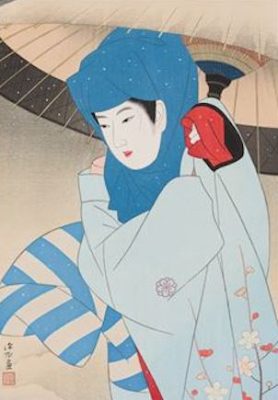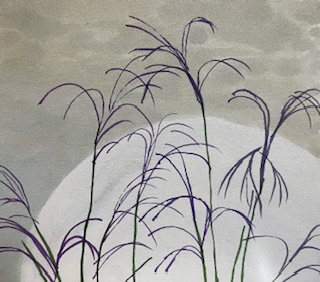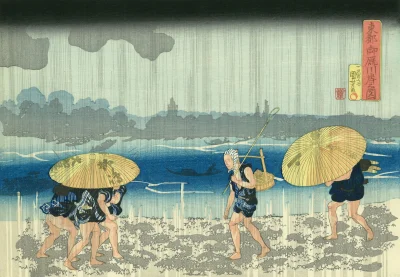Japanese Art from Ukiyo-e to Contemporary
Lee Jay Walker
Modern Tokyo Times

Ito Shinsui (1898–1972) stands as a luminous figure in the landscape of twentieth-century Japanese art. His work graced the Taishō and Shōwa eras with a quiet yet profound elegance, bridging tradition and modernity through his mastery of the visual form. As a leading force within the Shin Hanga movement, Shinsui — alongside a select circle of visionary artists — rekindled the spirit of Edo-period aesthetics, merging them seamlessly with Western sensibilities to create something both timeless and new.
Sadly, his early years were marked by hardship and upheaval. The financial ruin of his father, brought about by reckless ventures and eventual bankruptcy, disrupted the trajectory of Shinsui’s formal education. Yet from this adversity emerged unexpected fortune: unable to complete elementary school, he instead became a live-in apprentice at a printing shop. It was here, amidst ink and woodblock, that his artistic destiny took root. The intensity and natural grace of his early works reflect both the turbulence of his youth and the quiet resilience with which he met the world.

In her latest work, contemporary Japanese artist Sawako Utsumi offers a delicate yet profound homage to the timeless elegance of Kamisaka Sekka (1866–1942). Unlike earlier reinterpretations, where color schemes and compositional dynamics diverged boldly from the original, this new piece treads a gentler path. Utsumi alters only the angle of the stems and the choice of hues—replacing Sekka’s palette with a dusky interplay of dark green and gentle purple. Yet, within this subtle shift lies a quiet revolution.
For Utsumi, the horizon—and the flora that inhabits it—is not fixed, but illusionary: a space shaped as much by perception as by pigment. Her gentle deviation suggests that even when gazing upon the same scene, no two eyes, no two hearts, experience it alike. Whether between lovers, close friends, or complete strangers, proximity does not guarantee shared emotion. Each viewer finds their own thread of tranquility, longing, or escape woven into the horizon’s gentle fade.
Thus, while the changes may appear slight—almost imperceptible—the emotional register is entirely her own. Utsumi’s restrained divergence from Sekka invites contemplation not only of aesthetic nuance, but of the inner landscapes we all carry. In this quiet dialogue between past and present, master and muse, she crafts a work rich with mysticism, subtlety, and introspection—a poetic meditation on perception itself.

The Japanese artist Utagawa Kuniyoshi was born in the twilight of the eighteenth century and passed away in 1861, as the Edo Period approached its end. In his final years, the familiar rhythms of the old world began to shift—disrupted from within and shadowed by the growing presence of foreign powers pressing upon Japan’s shores.
A master of the woodblock print, Kuniyoshi poured his imagination into countless works, capturing the vivid pulse of the ‘floating world.’ It was more than a theme—it was the essence of his artistic spirit, a realm where myth, drama, and daily life converged in bold lines and vibrant color.
https://fineartamerica.com/featured/the-horizon-and-the-tranquility-of-the-mind-sawako-utsumi.html The Horizon and the Tranquility of the Mind
http://sawakoart.com Sawako Utsumi and her website

Modern Tokyo News is part of the Modern Tokyo Times group
http://moderntokyotimes.com Modern Tokyo Times – International News and Japan News
http://sawakoart.com – Sawako Utsumi and her website – Modern Tokyo Times artist
https://moderntokyonews.com Modern Tokyo News – Tokyo News and International News
PLEASE JOIN ON TWITTER
https://twitter.com/MTT_News Modern Tokyo Times
PLEASE JOIN ON FACEBOOK